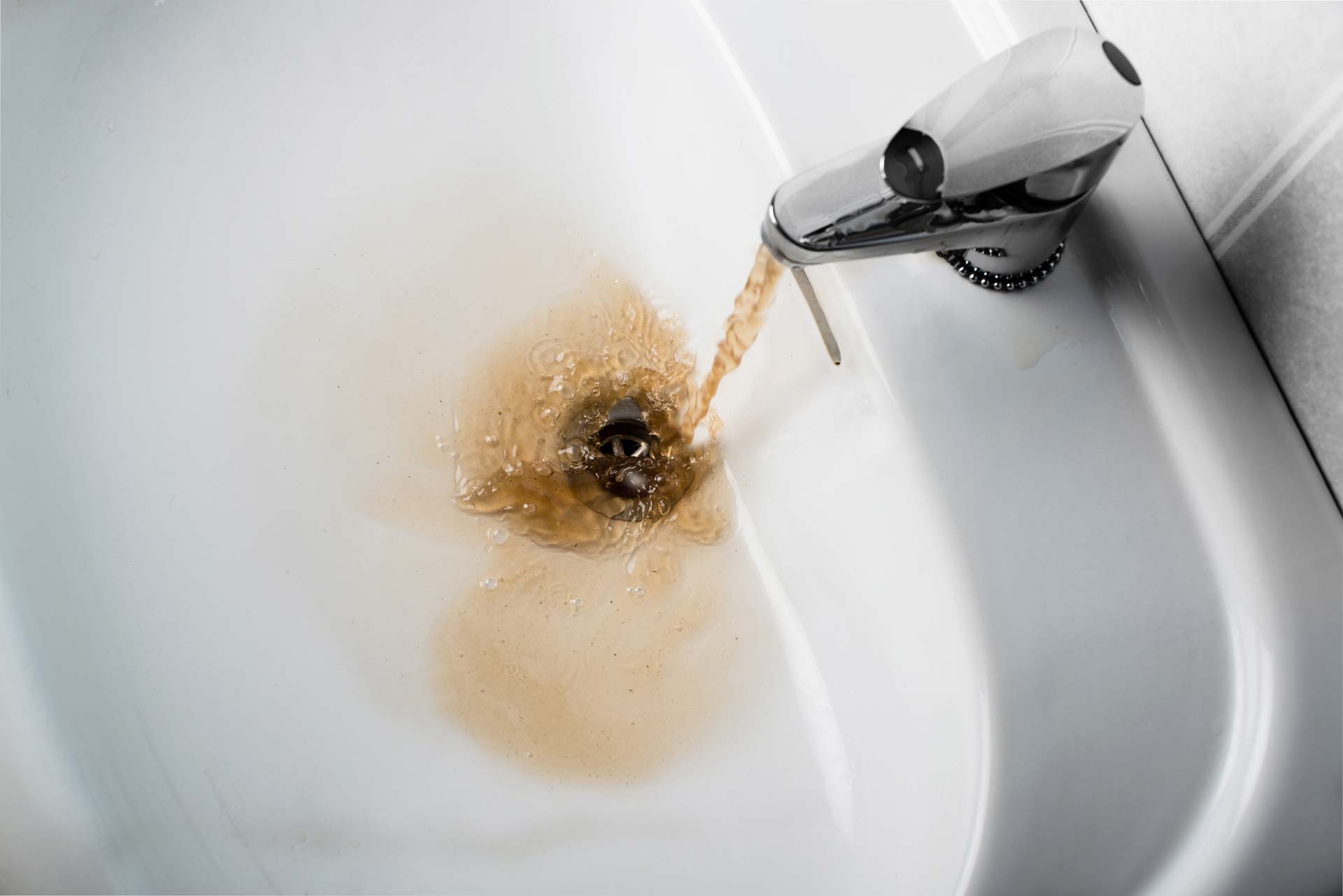Well contamination can have serious short- and long-term consequences. To keep your household safe, learn how to recognize water contamination and what to do about it.

Common Well Contamination Signs
If your water supply is sufficient and uncontaminated, it should be clear, with no noticeable taste or odor. If your well is contaminated, you may notice:
- Visible sediment or particles
- Discolored water
- Staining of faucets, appliances, or clothing exposed to water
- Altered taste (metallic, salty, soapy, or chemical)
- Altered smell (like rotten eggs, chlorine, or detergent)
These signs of contamination can indicate several different issues. Some are benign, like high levels of naturally occurring minerals. Others pose serious health threats. Issues with serious consequences include:
- Chemical runoff from fertilizers, pesticides, or other pollution
- Degraded or broken pipes
- Septic tank leaks
- An insufficient, broken, or malfunctioning filtration or water treatment system
Remember that other undetectable contaminants may also be present when you can see, taste, or smell evidence of well contamination. Bacteria, for example, may not be easily detectable but can still cause significant harm. Don’t take your water quality lightly. When you suspect contamination, make sure you address all potential issues.
Health-Related Signs of Water Contamination
It’s not always possible to identify water contamination by its appearance, taste, or smell. Sometimes, the signs of contamination may show up as health concerns or illnesses. These include:
- Heart palpitations
- Nausea
- Vomiting
- Diarrhea
- Skin rashes or irritation
- High blood pressure
- Headaches
- Cancer
- Fertility issues
- Joint or muscle pain
- Fatigue
In some cases, the impact of water contamination may be cumulative. Minimal exposure to a contaminant is often ok, but long-term exposure can harm the body. If you have chronic health issues, well water may be partly to blame.
Water contamination can also cause sudden-onset health concerns, especially digestive issues and skin irritation. When addressing these symptoms, consider your water supply.
Addressing Well Water Contamination
If you suspect water contamination, the first step is to test your water. Once you know what the problem is, you can fix it.
Call your well contractor for a professional-grade water test. While DIY testing can be helpful, your well contractor can provide comprehensive testing using the most up-to-date methods.
Once you know the problem, your contractor can help you choose and implement an effective solution. Their plan may include one or more of the following:
- Installing additional filtration features
- Repairing or replacing pipes or well fixtures
- Installing water softeners
- Adding safe amounts of chlorine to kill bacteria
The scope of how you treat water contamination will depend on many factors. Your well contractor can help you assess the situation and formulate an effective solution so that your water is safe and usable in the long term.
For assistance with well water contamination in Valatie or the region, call Goold Wells & Pumps today. With over 90 years of experience and a commitment to staying abreast of the latest well installation and maintenance developments, we can help you identify and address any contamination issue. Top-quality work is our gold standard, and our dedication to customer care is second to none. Goold Wells & Pumps—Trusted Name Since 1928.
